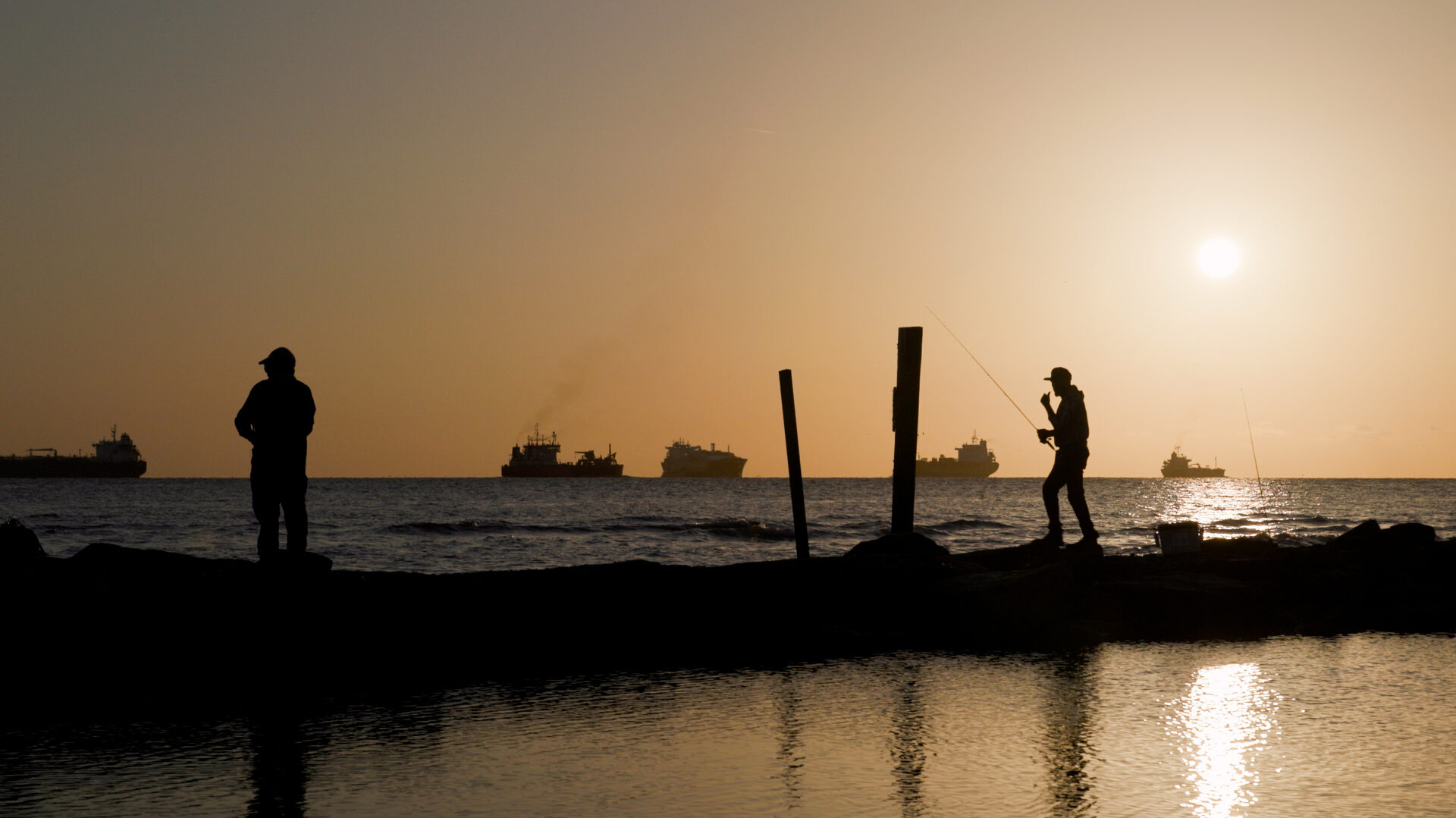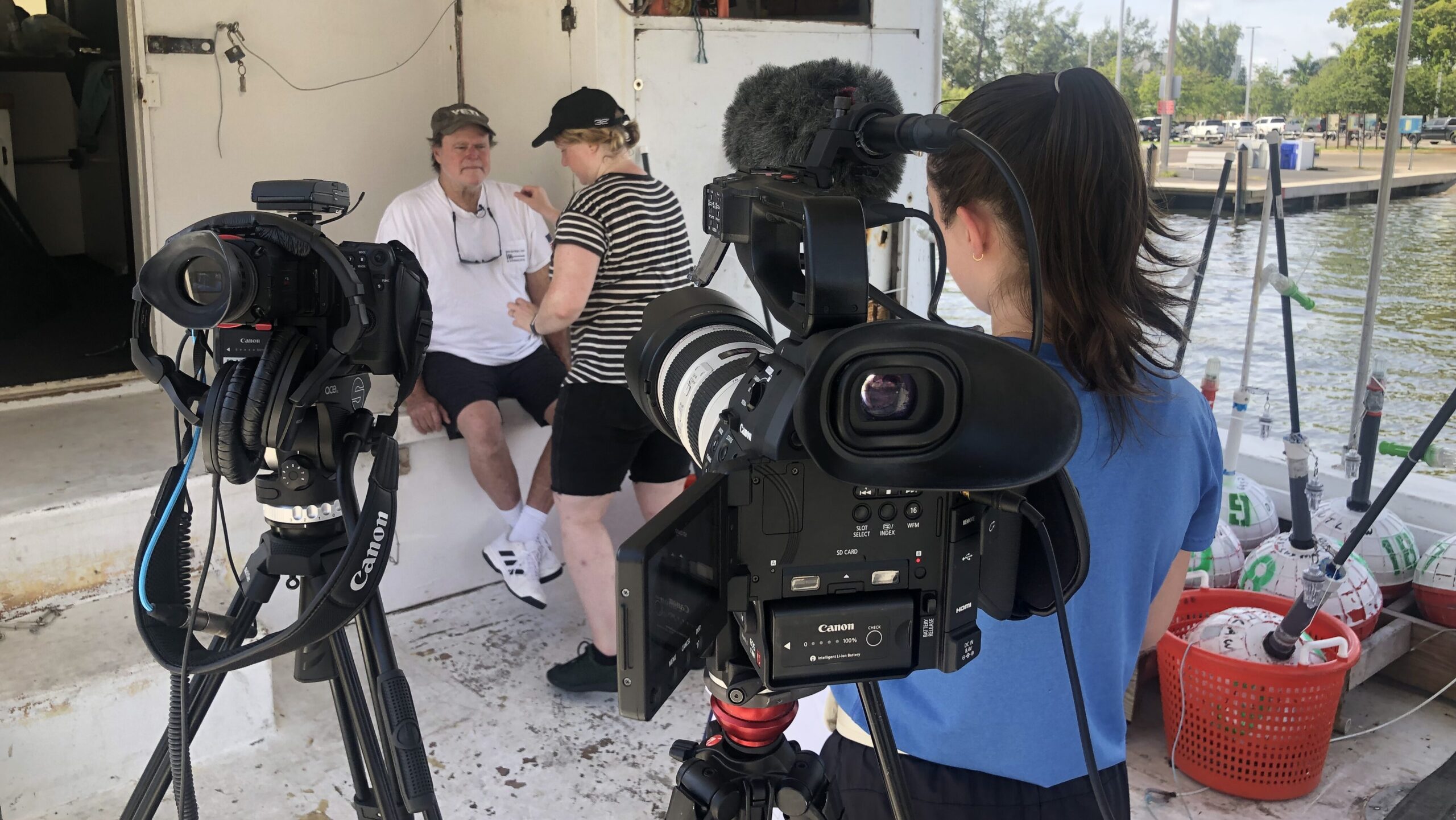
Lessons Learned from the Gulf: Top Takeaways for Video Shoots
Since 2016, Hatcher has been providing communications support to the National Fish and Wildlife Foundation (NFWF) and the National Oceanic and Atmospheric Administration (NOAA) as these two organizations work together to help restore fish populations injured in the Gulf of Mexico following the 2010 Deepwater Horizon oil spill—the largest maritime oil spill in U.S. history.
The Deepwater Horizon Oceanic Fish Restoration Project has successfully helped to restore fish in the Gulf thanks to participation from area pelagic longline fishermen who have reduced fishing pressure on pelagic fish species such as yellowfin tuna and swordfish.
After a hiatus from filming videos in person during the COVID-19 pandemic, our production team was eager to return to the field to capture engaging footage that reflects the evolution and success of the project. In June, we traveled to the Gulf of Mexico and spent two weeks filming and interviewing participants and stakeholders in Dulac, LA, Galveston, TX, and Pompano Beach, FL.


Since our return, we have reflected on how the effects of the pandemic reminded us to be flexible as shooting on location requires even more thoughtful planning and execution to tell our client’s important stories.
The goal of the Deepwater Horizon Oceanic Fish Restoration Project is to reduce fish mortality through a temporary, voluntary fishing repose. During the repose, vessel owners participating in the project refrain from pelagic longline fishing for six months, from January 1 through June 30, and receive compensation to help offset their potential loss in revenue. During the repose, participants have the option to continue to fish using alternative gear types that result in lower accidental catch of non-targeted species (or bycatch). During just the first three years of the project, participating vessel owners allowed approximately one million pounds of fish to remain in the water to grow, reproduce, and support future generations of fish. 2022 will mark the final year of the program.
Here are some of the Hatcher team’s takeaways from one of its first post-pandemic on location video shoots:
- The work starts weeks, and sometimes months, ahead of the actual shoot. Think through the outline of the video, what perspectives need to be included, and what questions to ask well before filming a single frame. When you are traveling for a video shoot, you only have one chance to capture b-roll. Make sure to think through which shots will enhance the video by creating a shot list and get plenty of footage.
- It’s important to be prepared to film in any situation. Come heat, humidity, or extremely bright conditions, know your gear and be able to adapt, but don’t forget that you are a human. Bring water. Make sure you allow enough time for your cameras to acclimate to the heat to mitigate foggy lenses. Test your equipment in a variety of outdoor situations to ensure you have everything you need to get the best shot.
- Flexibility in the moment is key. Even if you feel like you have done everything you can to plan, be open to taking suggestions and opportunities as they come your way. Being creative and filming a variety of b-roll in the field can ensure coverage for the edit. Value flexibility, troubleshooting, and iteration—these are qualities of a great team.
- The power of multiple perspectives. When planning interviews, it’s important to include a variety of diverse stakeholders. In this case, we interviewed project organizers, participants, community liaisons, and fish retailers. Including many different voices conveyed the complexity of the issue of restoring fish after the oil spill and provided a holistic view of the project.
- Give space and time for storytelling. Each interviewee brings their own energy, personality, and experience. More personal responses and compelling dialogue flow when the crew and the interviewee can take the time to get to know each other before the video shoot. If possible, schedule some time ahead of the interview to do a site visit. Meet your interviewee and talk to them without a camera first. For us, hearing how the project benefited fishermen’s lives and livelihoods brought home the importance of the project.
- Inspiration comes from understanding. Witnessing the Gulf fisheries in action and seeing first-hand the supply chain – from the fish being caught to bought – was a reminder of the importance of the work NFWF and NOAA are doing in the region. The fisheries are starting to recover, but not without new challenges. This project, which was a success because of partnerships and the participation of area pelagic longline fishermen, has helped to reduce fishing pressure on pelagic fish species, including yellowfin tuna and swordfish, and to support a robust fishery for future generations.
Being prepared, flexible, and agile during a video shoot will produce a more meaningful story.